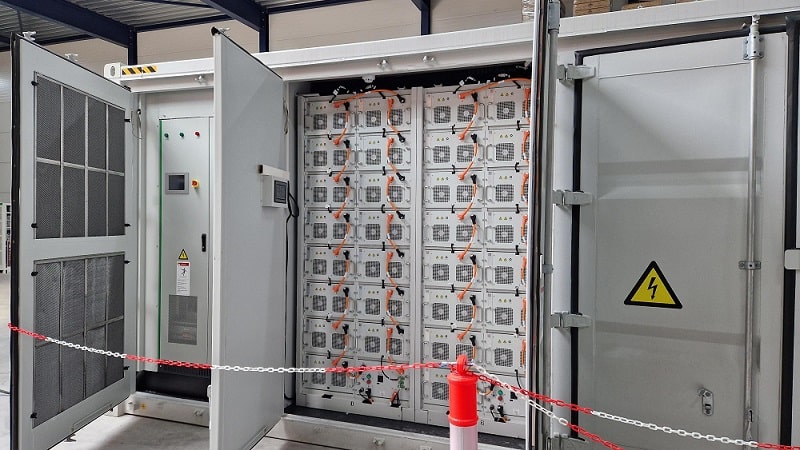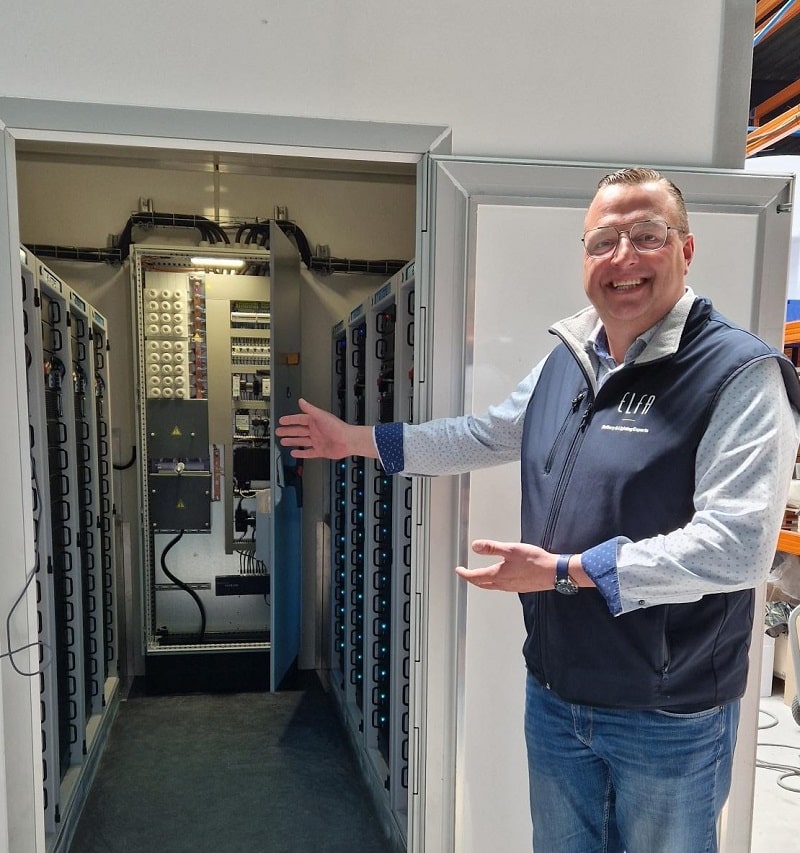A sodium-ion battery (also known as a saltwater battery) is a unique electrochemical energy storage system, based on saltwater electrolyte. Fundamentally, a saltwater battery comprises salt and a freshwater reservoir. During its operation, the salt- and freshwater are segregated, prompting the migration of sodium-ions from one side to the other. This ion flow generates an electric current, suitable for powering various devices. A saltwater battery offers low-maintenance, eco-friendliness, and versatility for diverse applications. It boasts a lifespan of up to 20 years.
Yes. Unlike most batteries, sodium-ion batteries aren’t made from heavy metals. This makes them easier to recycle. As a result, they also give less impact on the environment.
Sodium-ion batteries are made of a safe electrolyte: saltwater. The batteries are completely sealed and require no maintenance. They are self-balancing and therefore require no compensating charge or battery management system (BMS).
Sodium-ion batteries are seen as a potential replacement for lithium-ion batteries in the future. This is because of the abundance of sodium resources and environmental impact. However, the larger size of sodium ions makes for a challenge. Lithium-ion is therefore still the preferred choice for situations where minimal size and weight are needed. The larger size of sodium-ion batteries make them limited in applications like laptops and smartphones.
The charging time for NiMH-batteries (Nickel Metal Hydride batteries) can differ depending on factors like the capacity of the battery and the charger’s charging rate. We recommend referring to the specific charging instructions provided by the manufacturer of the batteries and the charger to ensure safe and efficient charging.
The sodium-ion battery works on a very simple principle: a plastic crate is filled in two compartments. A sodium-ion battery contains a salt and a freshwater reservoir. On contact, an electric current is created. When the battery charges, the fresh and salt water are separated again. The battery also contains manganese oxide and carbon-titanium phosphate.
A sodium-ion battery is low-maintenance, environmentally friendly and lends itself well to domestic use. The saltwater battery has a service life of up to 20 years.
Of course, Elfa has the sodium-ion battery in its range. Visit our saltwater batteries page for more information.
NiMH and NiCd-batteries are both ideal for high-demanding devices. Since the import of NiCd-batteries has been banned in 2006, NiMH-batteries stand as a great alternative to NiCd. Typically, they have the same nominal voltage of 1.2 volts per cell, making them interchangeable in most cases.
An advantage of NiMH-batteries is that they generally have a higher energy density compared to NiCd-batteries. This makes NiMH-batteries last longer in some cases compared to their NiCd-counterpart.
NiCd and NiMH-batteries have different charging characteristics. NiMH batteries are more sensitive to overcharging. That’s why we recommend using only a designated NiMH charger to charge NiMH-batteries.
NiMH batteries are known to have a high capacity, measured in the number of (charge) cycles of the battery. For NiMH batteries, this is typically between 700 – 1000 cycles.
If the NiMH battery is repeatedly deeply discharged, performance starts to decline after 200 to 300 cycles. On average, NiMH batteries have a lifespan of about 2 to 3 years.
Elfa is currently busy with an energy storage project at Roompot. We are in fact going to supply an energy storage system for as many as 85 holiday homes there. Each holiday home will be fitted with an average of six solar panels, totalling 153,000 Wp. Roompot is therefore the end customer of this project.

However, our client is Spie. They are responsible for the groundwork, such as pulling cables to the holiday homes and installing charging poles in car parks. During the project, Spie enlisted the help of Elfa.
Elfa is responsible for supervising the project, as well as inspecting the final installation. Olaf Bitter, technical account manager at Elfa, supervises this project.

We are very happy with the pleasant cooperation with Spie. As a result, we now have several similar projects with Spie.
Wednesday 3 May was an important day for the Roompot project. That was when the FAT (Factory Acceptance Test) was taken. Apart from some minor points of improvement, we will install the energy storage system on site at Roompot in May. We are already looking forward to this important moment in the project.
Stay tuned!